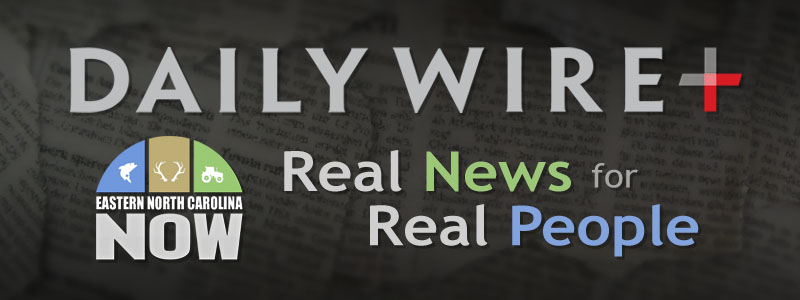Stewards of the Visual Exposition
Civics Test: When Is Election Day?
Publisher's note: The author of this post is Rick Henderson, who is managing editor for the Carolina Journal, John Hood Publisher.
If you thought Election Day was Nov. 6, you might want to reconsider. Depending on where you live and what office you're talking about, Election Day could be in July or May. In some places and in some races, it occurred when candidate filing ended Feb. 28.
Many North Carolinians will not have an opportunity to choose among legislative and even congressional candidates, because in a number of contests, no candidate has filed for office from one of the major parties. In most other circumstances, races for Congress, the state House, and the state Senate will be decided long before November because the district lines have been drawn in such a way to leave the incumbent party's nominee facing no serious challenge.
This sorry situation begs for solutions, and we can think of two that might at least give voters more say in who represents them: nonpartisan redistricting and legislative term limits.
The North Carolina FreeEnterprise Foundation noted that Democratic voters in the 9th Congressional District, now represented by freshman Republican Robert Pittenger, will have no candidate on the November ballot to support. Pittenger has a primary challenger, but Republicans will hold that seat without opposition until 2017.
Moreover, 21 state Senate seats (nine held by Democrats, 12 by Republicans) and 55 state House contests (28 Democratic, 27 Republican) will be decided by the May primary, because no candidate from an opposing party filed in those races. And unless unaffiliated or write-in candidates file, the races for 20 Senate and 44 House seats never materialized, as incumbents or candidates representing incumbent parties filed without any opposition.
Whether by statute or constitutional amendment, North Carolina needs a set of rules that (as much as possible) removes partisanship and political manipulation from the composition of legislative and congressional districts. Districts should represent equal numbers of voters, respect city limits and county lines, be compact geographically, and not favor incumbent officials or previous election results.
With the proper rules in place, it doesn't matter very much who draws the lines, members of an independent commission or legislative staff.
The current system allows the party holding the majority of legislative seats during the session when the once-a-decade Census is released to expand its power far beyond the support it has received from voters. In 2012, Republicans and Democrats roughly split the vote for General Assembly and congressional races, and yet the GOP won nine of 13 congressional districts and nearly two-thirds of legislative races.
While the quality of candidates and their campaigns matter, there's no question the districts drawn in 2011 gave Republicans an outsized partisan advantage. (This behavior isn't new. Democrats used similar leverage to their benefit for the districts drawn after the 2000 census.)
For years, the John Locke Foundation has joined elected officials and interest groups across the ideological spectrum to call for nonpartisan redistricting reform. House Speaker Pro Tem Paul "Skip" Stam, R-Wake, has been on board with this campaign when Republicans were in the minority, and to his credit, his enthusiasm has not waned now that the GOP is in control. Let's hope he, and his many allies for reform, can get this done.
Majorities of voters favor term limits for legislators, viewing the accumulation of power that comes with lengthy incumbency as too great a temptation for politicians and too great an injury to the principles of limited, representative government. The U.S. Supreme Court has said that state residents may not place limits on the length of time their members of Congress spend in office, but they may set boundaries on legislative terms. More than a dozen have.
Imposing limits on legislative terms not only would rotate the roster of the General Assembly regularly with new faces and, with luck, fresh ideas. It would give many more talented, civic-minded North Carolinians a chance to serve in Raleigh (briefly) and then return to their communities. It would allow more citizen politicians to participate in what is supposed to be a part-time legislature.
More than two centuries ago, "taxation without representation" became a battle cry. Today, it's business as usual. These circumstances are untenable for a functioning representative government. But they can be remedied with sound redistricting reform and legislative term limits.
Go Back
If you thought Election Day was Nov. 6, you might want to reconsider. Depending on where you live and what office you're talking about, Election Day could be in July or May. In some places and in some races, it occurred when candidate filing ended Feb. 28.
Many North Carolinians will not have an opportunity to choose among legislative and even congressional candidates, because in a number of contests, no candidate has filed for office from one of the major parties. In most other circumstances, races for Congress, the state House, and the state Senate will be decided long before November because the district lines have been drawn in such a way to leave the incumbent party's nominee facing no serious challenge.
This sorry situation begs for solutions, and we can think of two that might at least give voters more say in who represents them: nonpartisan redistricting and legislative term limits.
The North Carolina FreeEnterprise Foundation noted that Democratic voters in the 9th Congressional District, now represented by freshman Republican Robert Pittenger, will have no candidate on the November ballot to support. Pittenger has a primary challenger, but Republicans will hold that seat without opposition until 2017.
Moreover, 21 state Senate seats (nine held by Democrats, 12 by Republicans) and 55 state House contests (28 Democratic, 27 Republican) will be decided by the May primary, because no candidate from an opposing party filed in those races. And unless unaffiliated or write-in candidates file, the races for 20 Senate and 44 House seats never materialized, as incumbents or candidates representing incumbent parties filed without any opposition.
Whether by statute or constitutional amendment, North Carolina needs a set of rules that (as much as possible) removes partisanship and political manipulation from the composition of legislative and congressional districts. Districts should represent equal numbers of voters, respect city limits and county lines, be compact geographically, and not favor incumbent officials or previous election results.
With the proper rules in place, it doesn't matter very much who draws the lines, members of an independent commission or legislative staff.
The current system allows the party holding the majority of legislative seats during the session when the once-a-decade Census is released to expand its power far beyond the support it has received from voters. In 2012, Republicans and Democrats roughly split the vote for General Assembly and congressional races, and yet the GOP won nine of 13 congressional districts and nearly two-thirds of legislative races.
While the quality of candidates and their campaigns matter, there's no question the districts drawn in 2011 gave Republicans an outsized partisan advantage. (This behavior isn't new. Democrats used similar leverage to their benefit for the districts drawn after the 2000 census.)
For years, the John Locke Foundation has joined elected officials and interest groups across the ideological spectrum to call for nonpartisan redistricting reform. House Speaker Pro Tem Paul "Skip" Stam, R-Wake, has been on board with this campaign when Republicans were in the minority, and to his credit, his enthusiasm has not waned now that the GOP is in control. Let's hope he, and his many allies for reform, can get this done.
Majorities of voters favor term limits for legislators, viewing the accumulation of power that comes with lengthy incumbency as too great a temptation for politicians and too great an injury to the principles of limited, representative government. The U.S. Supreme Court has said that state residents may not place limits on the length of time their members of Congress spend in office, but they may set boundaries on legislative terms. More than a dozen have.
Imposing limits on legislative terms not only would rotate the roster of the General Assembly regularly with new faces and, with luck, fresh ideas. It would give many more talented, civic-minded North Carolinians a chance to serve in Raleigh (briefly) and then return to their communities. It would allow more citizen politicians to participate in what is supposed to be a part-time legislature.
More than two centuries ago, "taxation without representation" became a battle cry. Today, it's business as usual. These circumstances are untenable for a functioning representative government. But they can be remedied with sound redistricting reform and legislative term limits.
| What UNC's Poverty Center Was Hiding | Carolina Journal, Editorials, Op-Ed & Politics | NC-03: GOP challenger Griffin wants to offer "conservative choice" to voters |
Latest Op-Ed & Politics
|
this at the time that pro-Hamas radicals are rioting around the country
Published: Thursday, April 25th, 2024 @ 8:01 am
By: John Steed
|
|
Pro death roundtable
Published: Wednesday, April 24th, 2024 @ 12:39 pm
By: Countrygirl1411
|
|
populist / nationalist anti-immigration AfD most popular party among young voters, CDU second
Published: Wednesday, April 24th, 2024 @ 11:25 am
By: John Steed
|
|
political scheme behhind raid on Mar-a-Lago
Published: Wednesday, April 24th, 2024 @ 9:16 am
By: John Steed
|
|
how many of these will come to North Carolina?
Published: Tuesday, April 23rd, 2024 @ 1:32 pm
By: John Steed
|
|
Barr had previously said he would jump off a bridge before supporting Trump
Published: Tuesday, April 23rd, 2024 @ 11:37 am
By: John Steed
|
|
Babis is leader of opposition in Czech parliament
Published: Tuesday, April 23rd, 2024 @ 10:28 am
By: John Steed
|
|
illegal alien "asylum seeker" migrants are a crime wave on both sides of the Atlantic
Published: Tuesday, April 23rd, 2024 @ 9:44 am
By: John Steed
|
|
only one holdout against acquital
Published: Tuesday, April 23rd, 2024 @ 9:01 am
By: John Steed
|
|
DEI now includes criminals?
Published: Monday, April 22nd, 2024 @ 8:33 pm
By: John Steed
|
|
Biden regime intends to force public school compliance as well as colleges
Published: Monday, April 22nd, 2024 @ 1:55 pm
By: John Steed
|
























